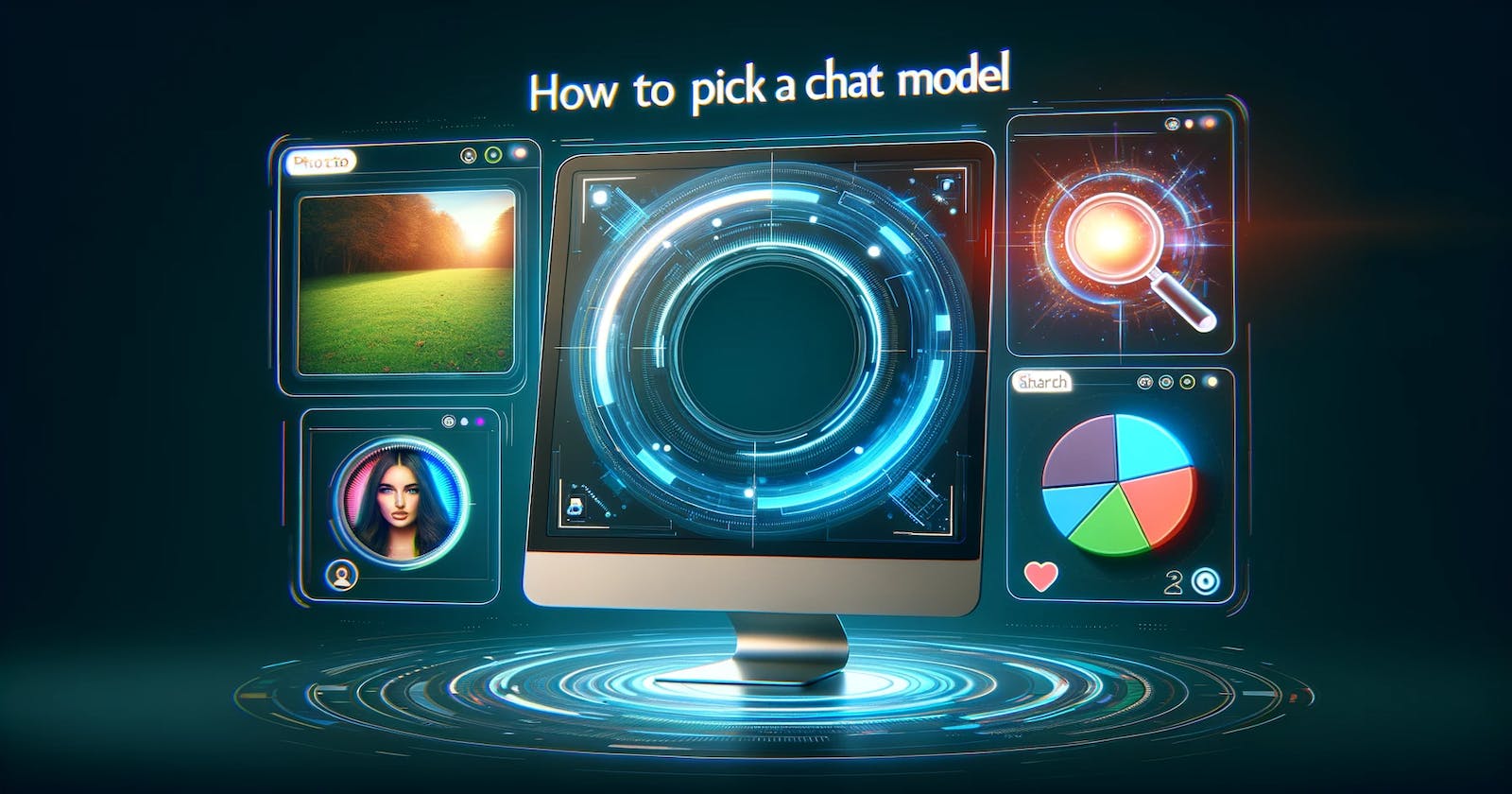These are my findings from interacting with chat models via the web interface, primarily ChatGPT with a Plus subscription, but also several others.
Please note that you may encounter varying experiences due to differences in the models, stability, account behavior, server responses, chat length, and evolving features.
Different models are optimal for different use cases. These are my preferred choices for each use case.
Let's go.
Use cases
Text In Text Out
Try OpenAI ChatGPT4 with Default (requires a paid ChatGPT Plus subscription):
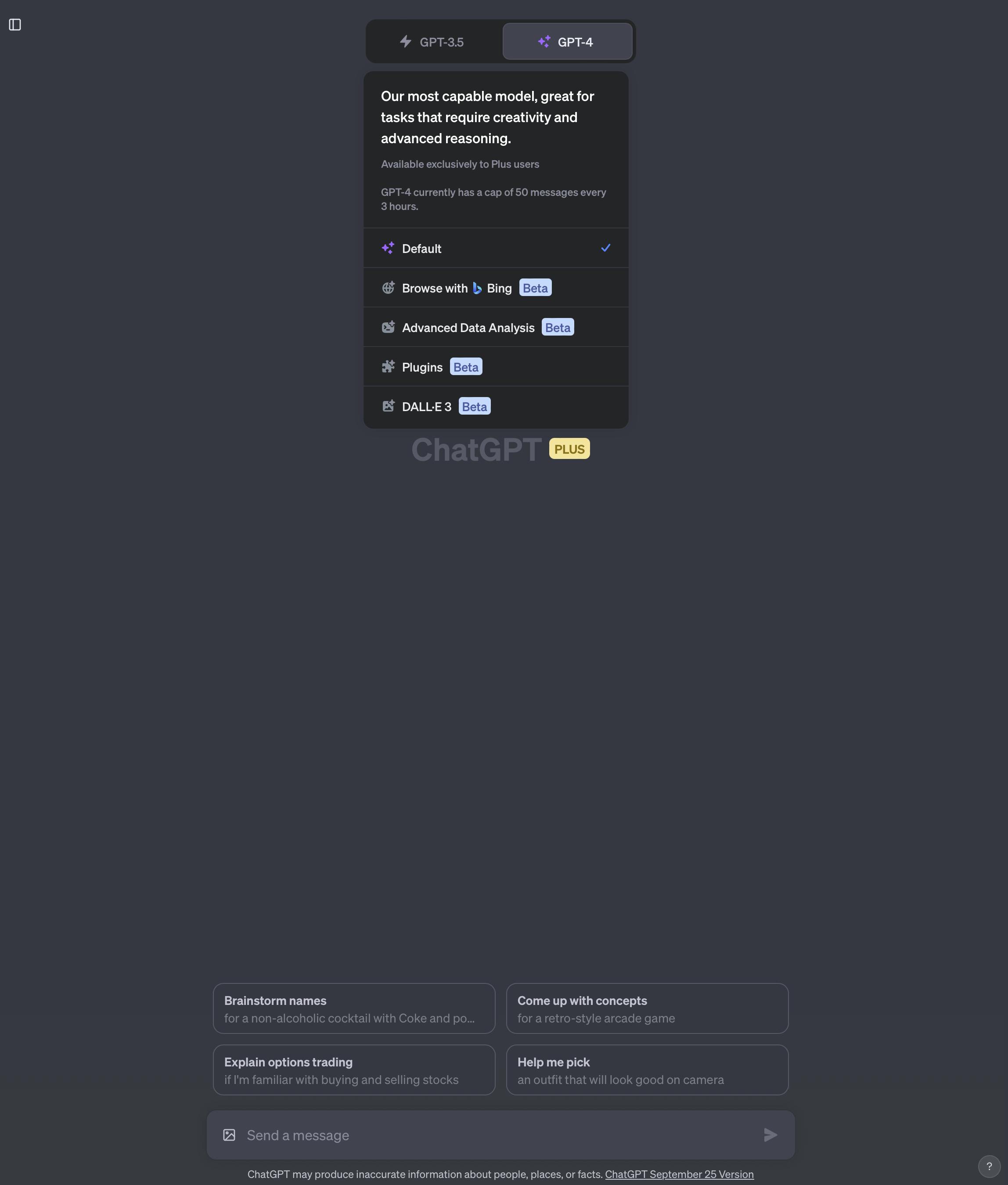
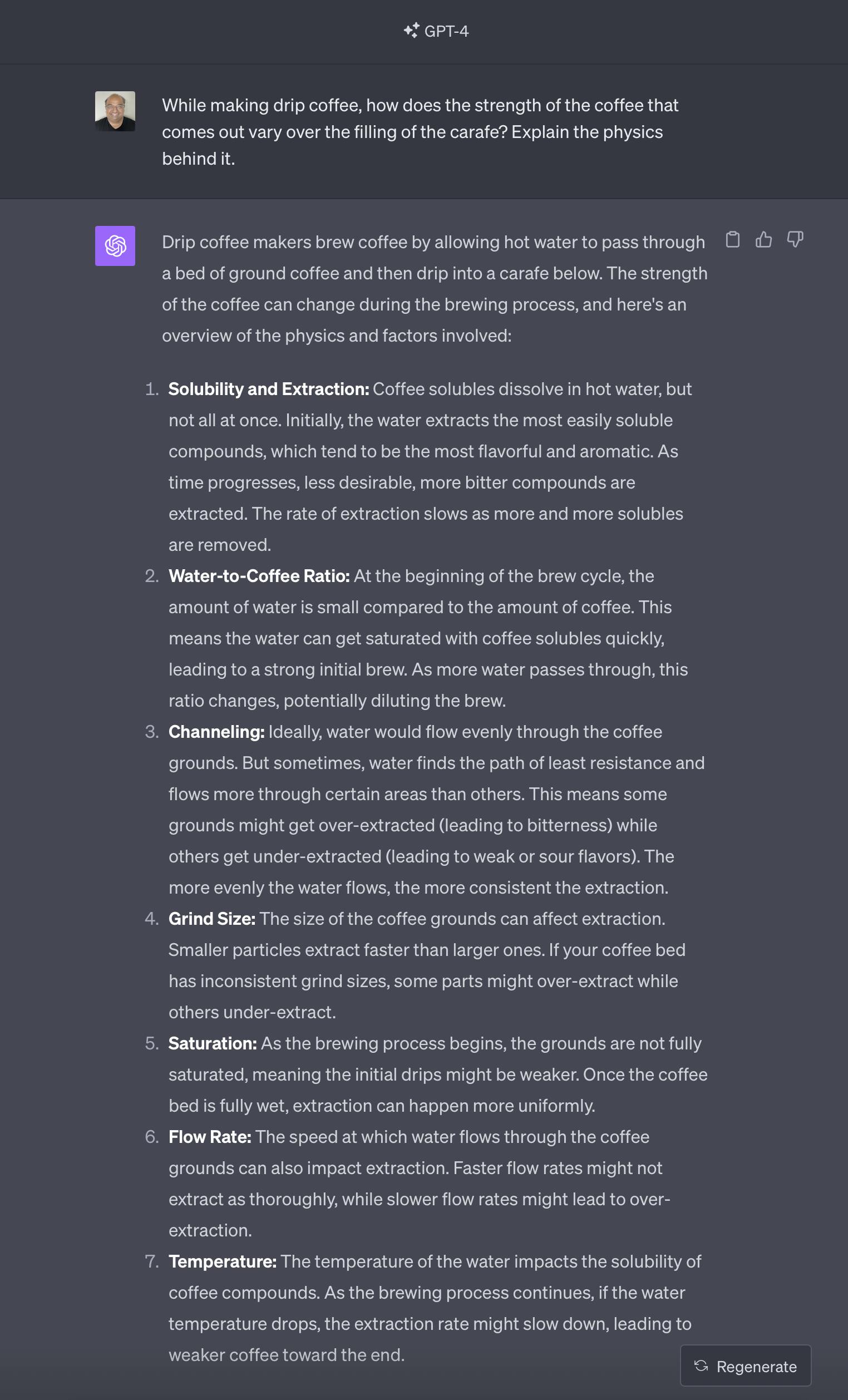
If it doesn't work for a use case or is slow, try OpenAI ChatGPT3.5, which is free:
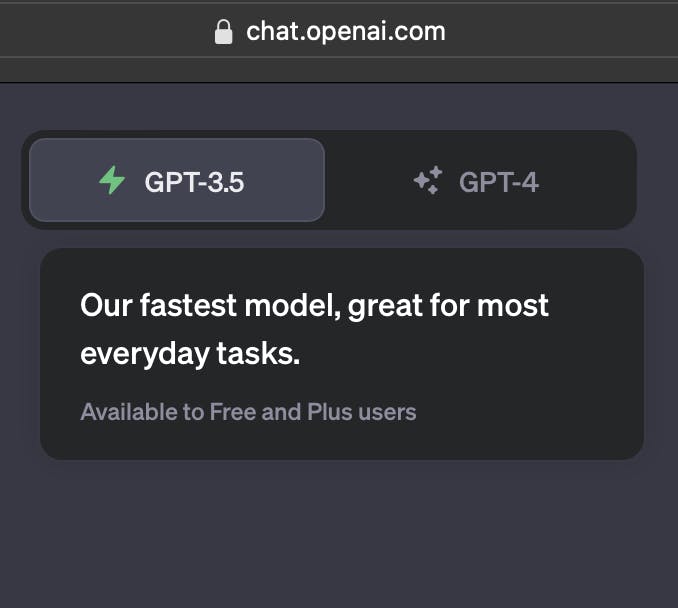
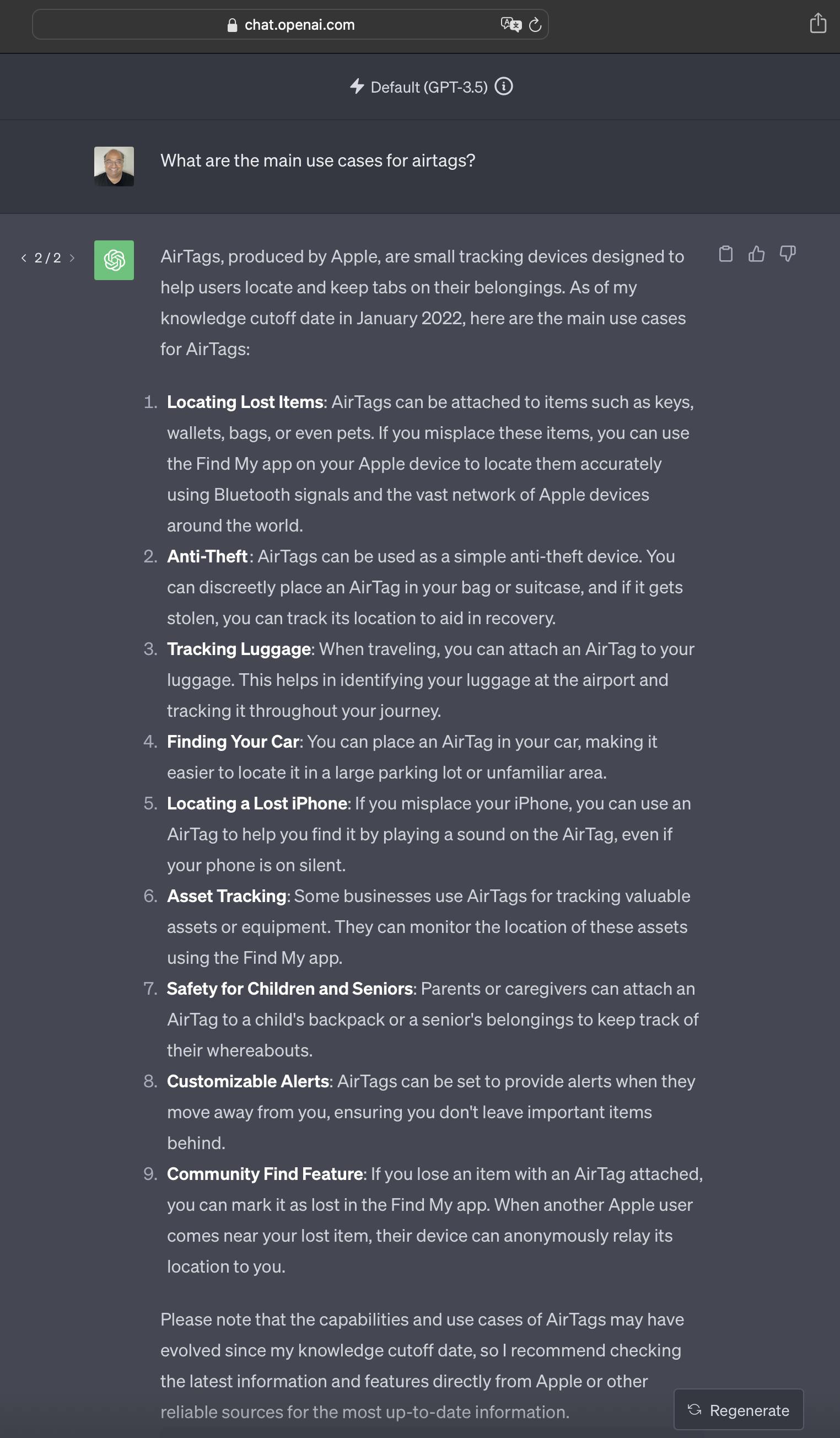
Up-to-date text in, text out
Most text chat models are only aware of things up to the date of their last training, called the knowledge cutoff date. Even though they may advertise a last updated date, they may still have been trained to an earlier date. And don't trust the latest date the chat was updated. Most updates are about other things, not retraining the whole model to extend the knowledge cutoff.
To find out when a model was last updated, you can ask about something recent:
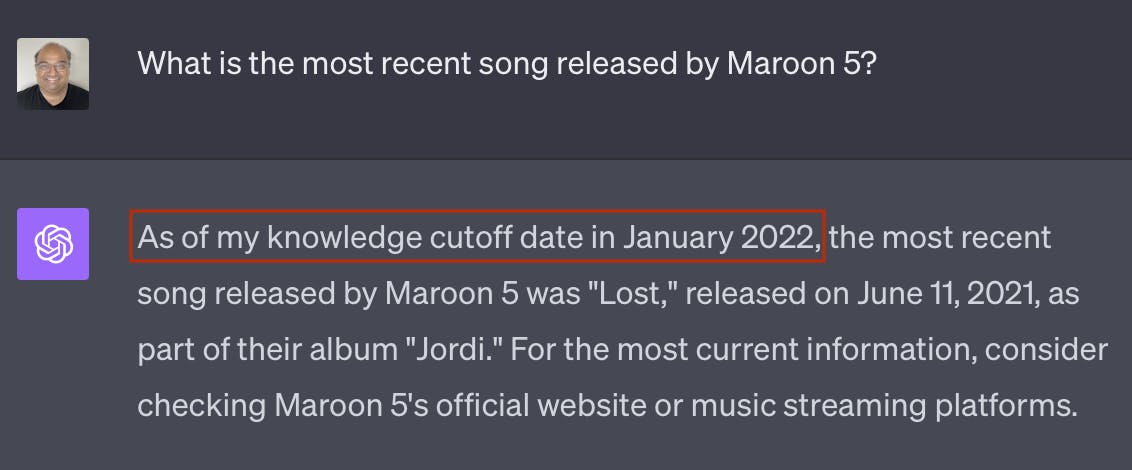
If you want to chat with a model about recent information, you have a few options, but depending on your question, the results will be mixed.
Microsoft Bing Chat - you may need to be in the Bing app, in the Edge browser, or on a Windows machine to access this:
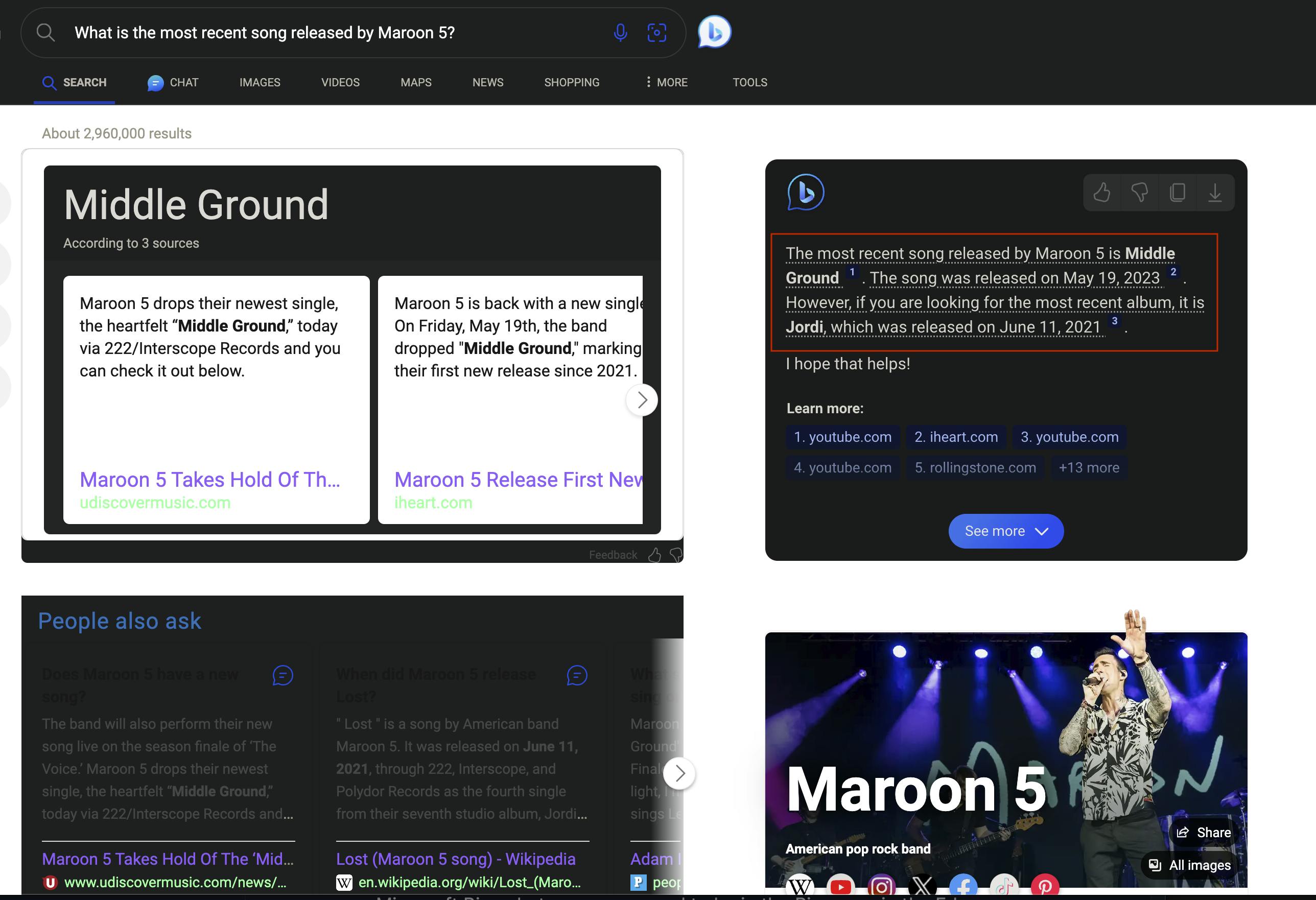
Another option is OpenAI ChatGPT4 with web browsing turned on, which uses Bing search:
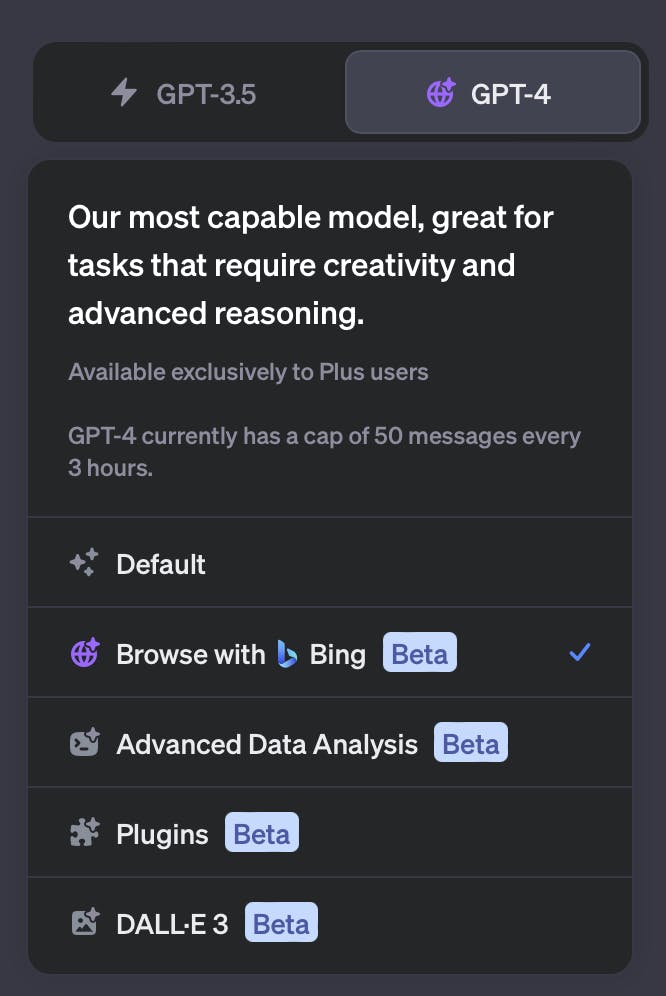
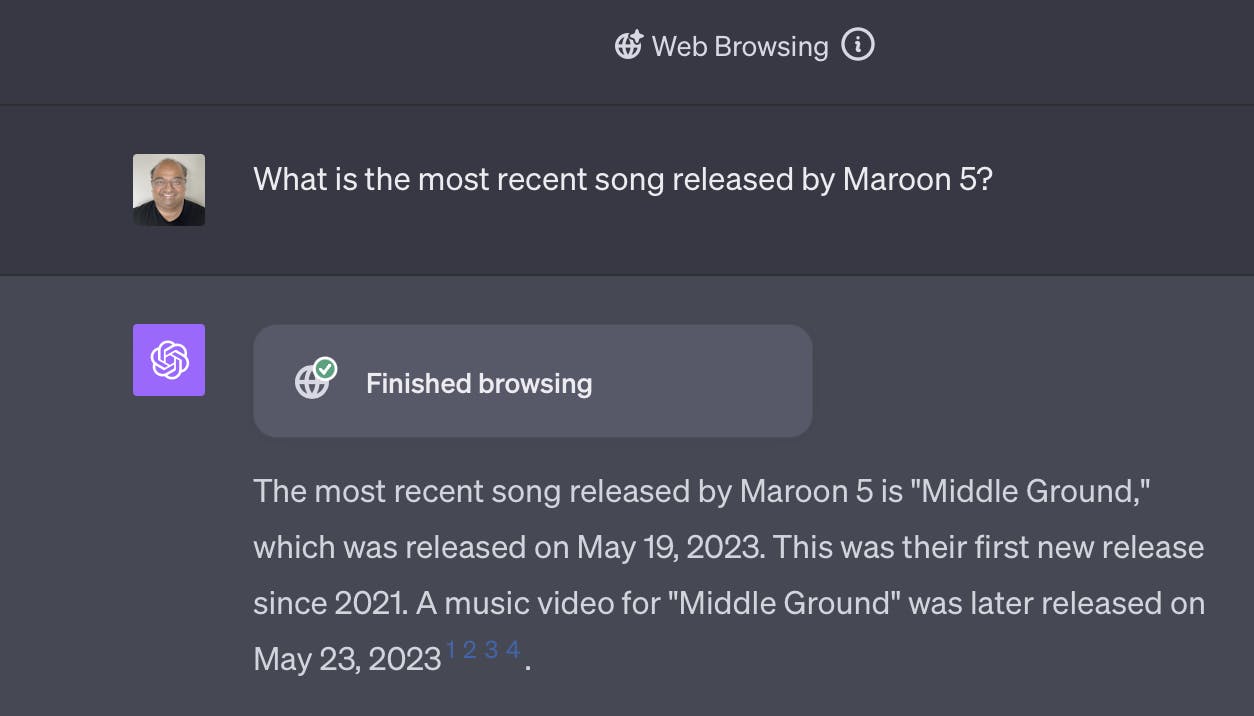
Image and text in, text out
If you want to chat in the context of your image (including the text within the image), use OpenAI ChatGPT4.
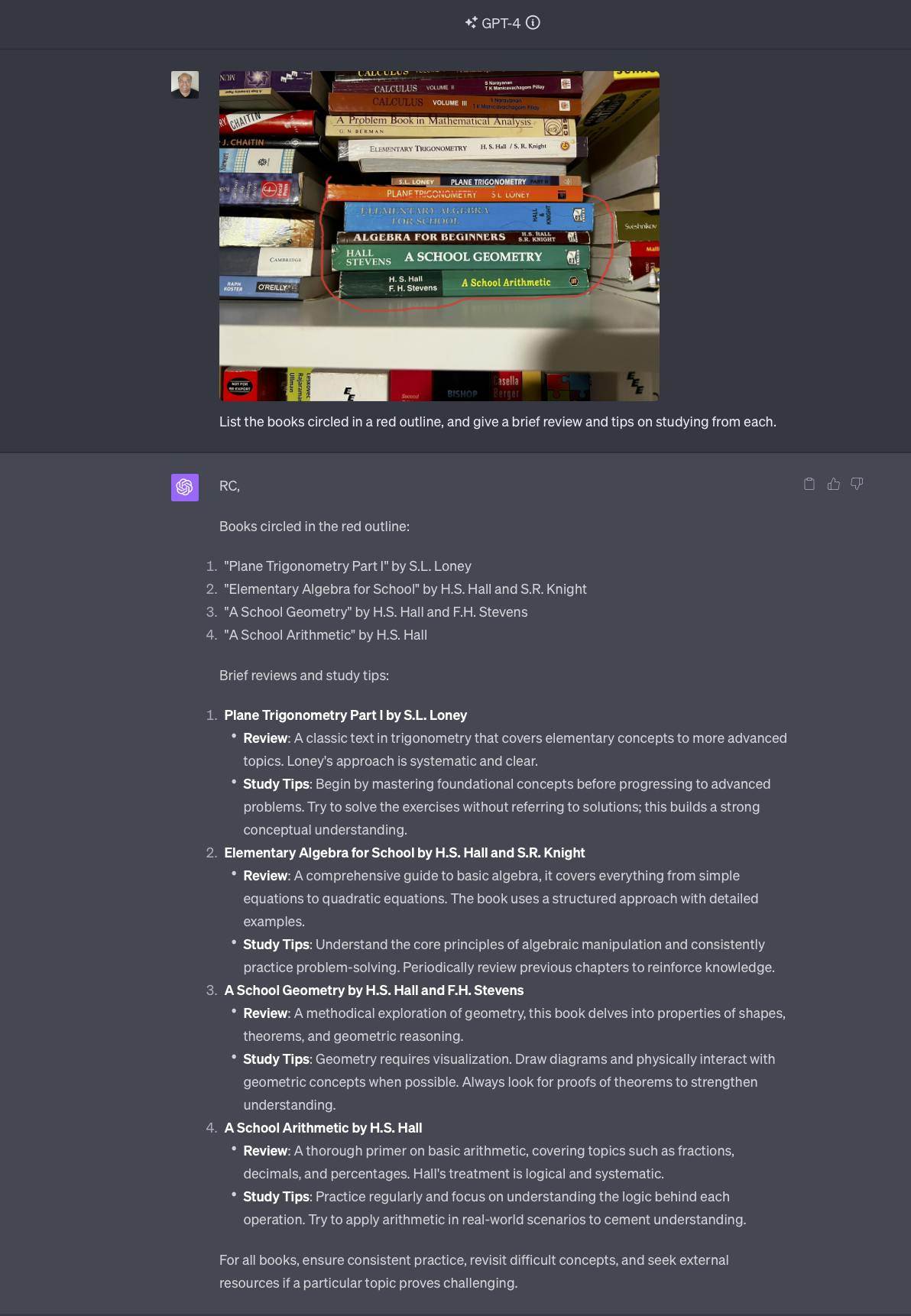
Long documents
If you just want to chat in the context of a long document, try Anthropic Claude.

Chatting with Google apps
Use Google Bard If you want to chat with Google Apps - type @ to see the supported apps:

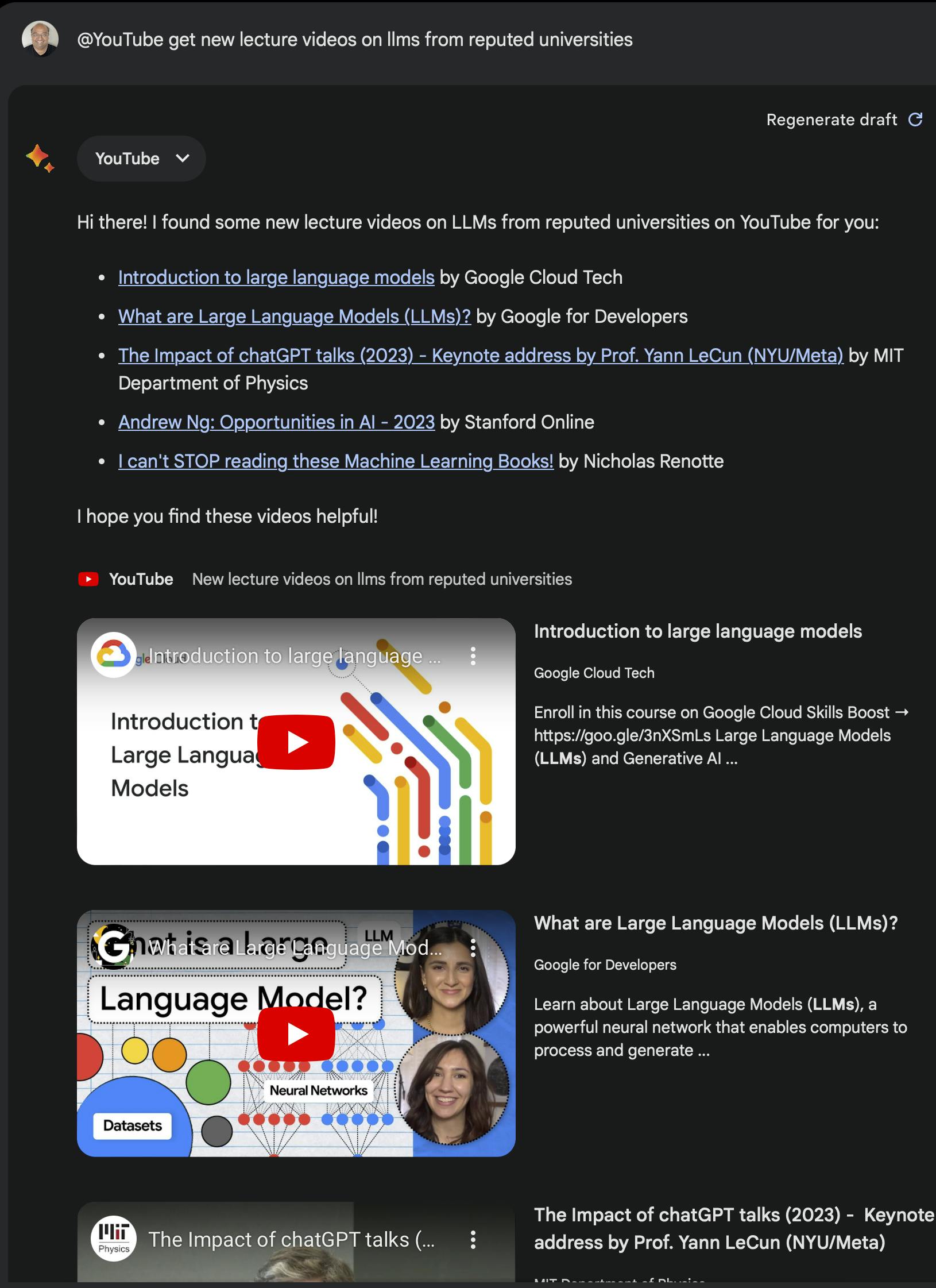
Text to Image
If you want to generate images using text prompts, there are many options. A recent favorite is to use DallE-3 from within OpenAI ChatGPT4:
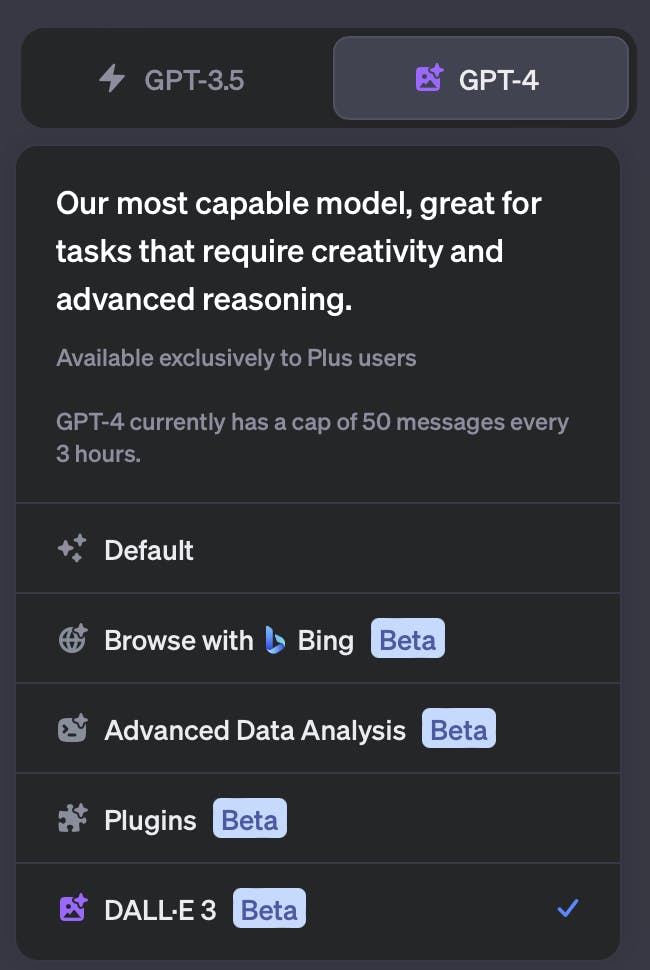
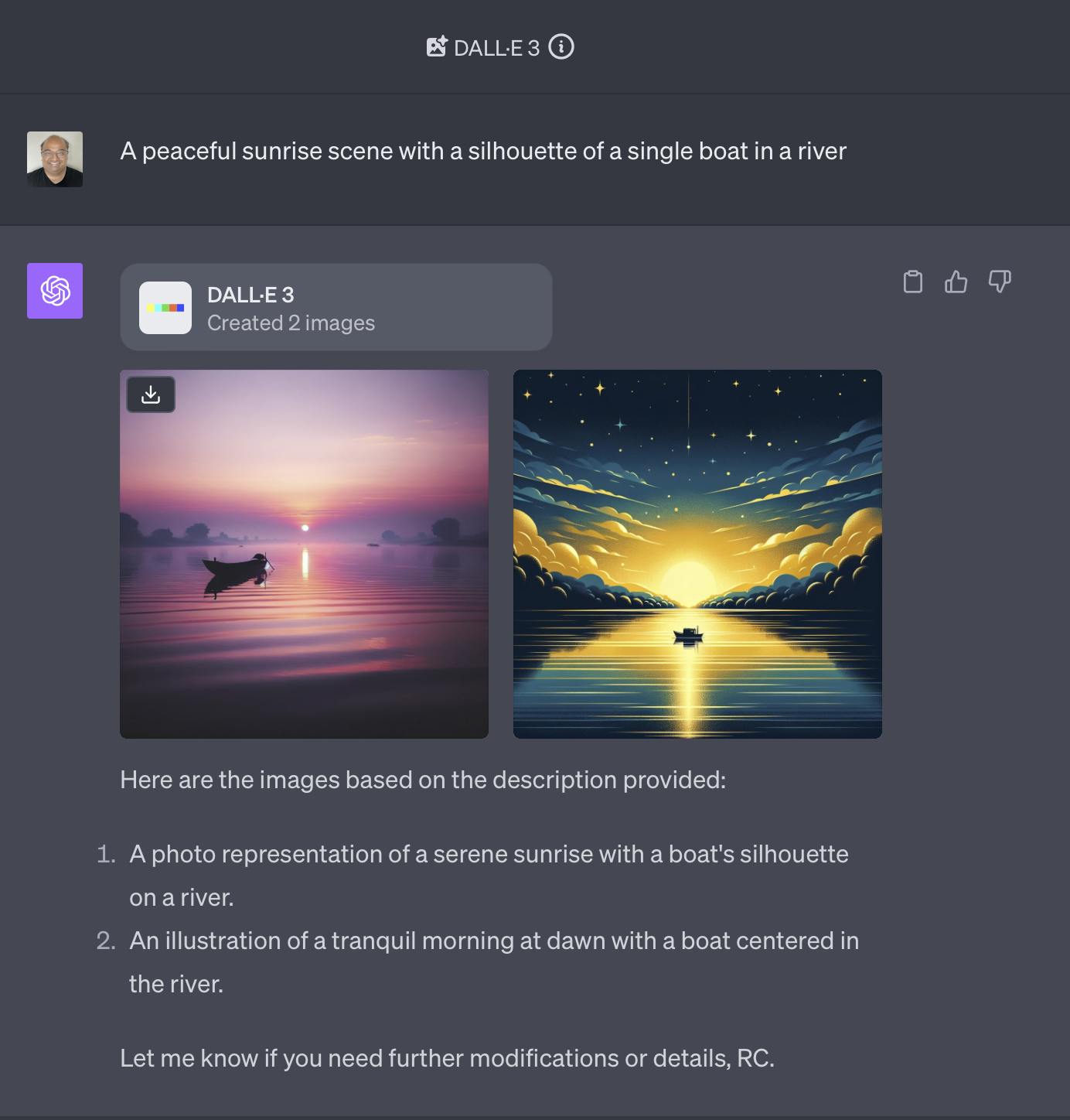
You can then chat to modify any image you like.
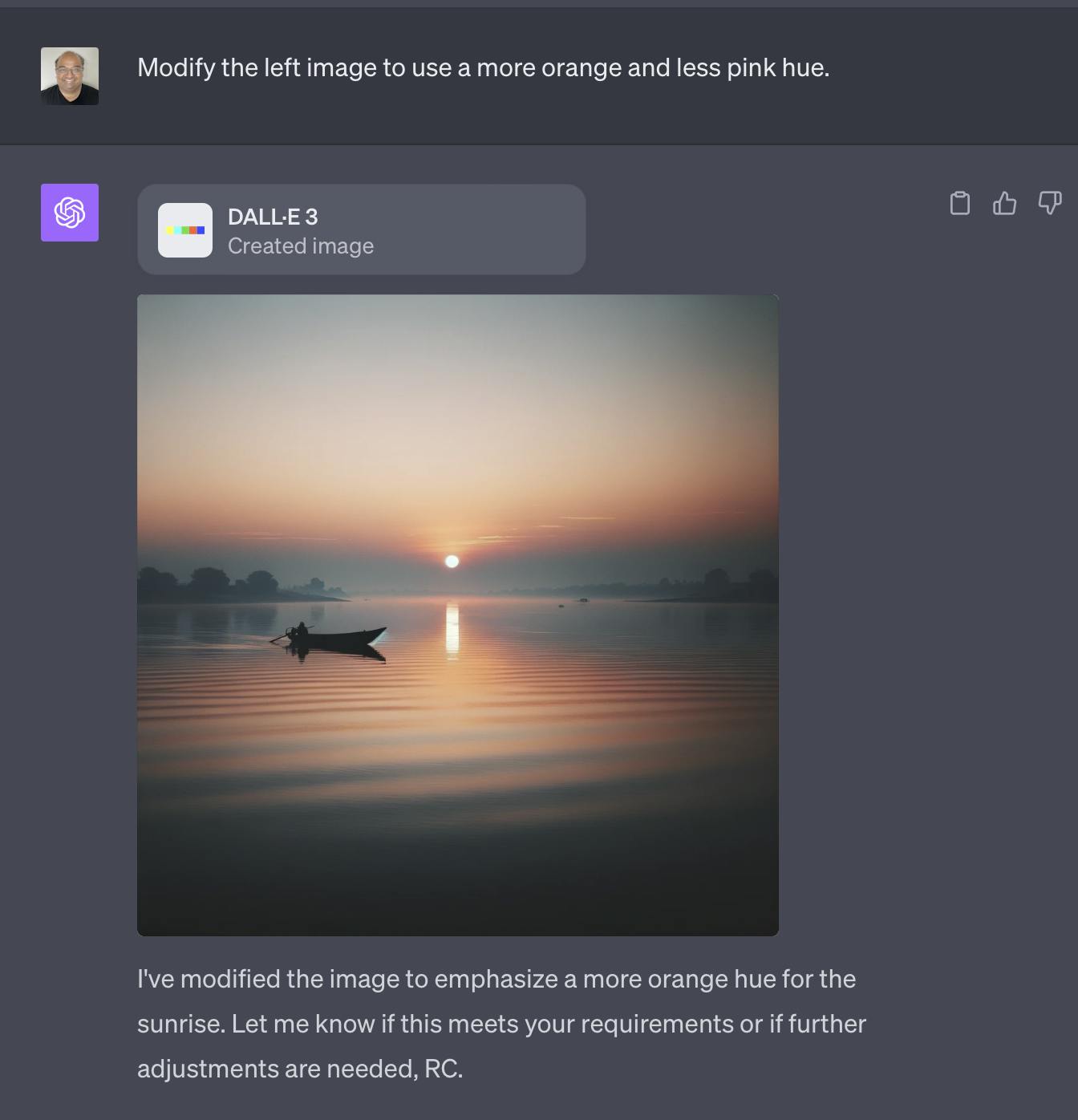
One huge benefit of this chat model is that you do not have to deal with specifying image prompts using special language and keywords - you can ask in natural language, and ChatGPT4 generates the required prompts internally and passes them on to Dall-E 3 to generate the images. You can see the actual prompt used to generate each image by clicking on it:

You can then copy a prompt you like and modify it if needed. Here I changed the prompt to say raft instead of boat:

Text to charts
You can use OpenAI ChatGPT4 with the Advanced Data Analysis plugin enabled to generate charts.
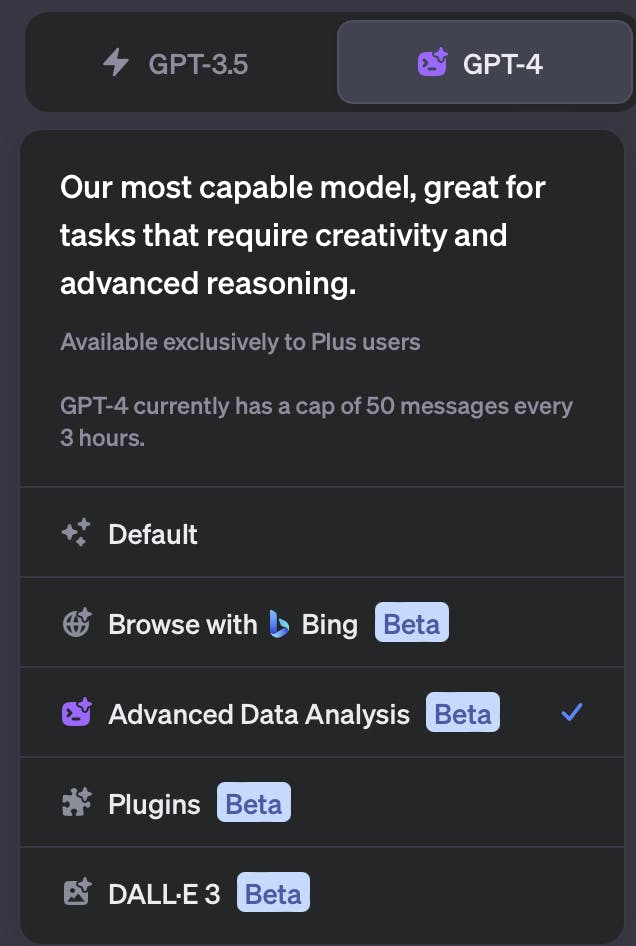
You can generate charts based on the model's internal knowledge:

You can also upload some data and ask for charts or insights:
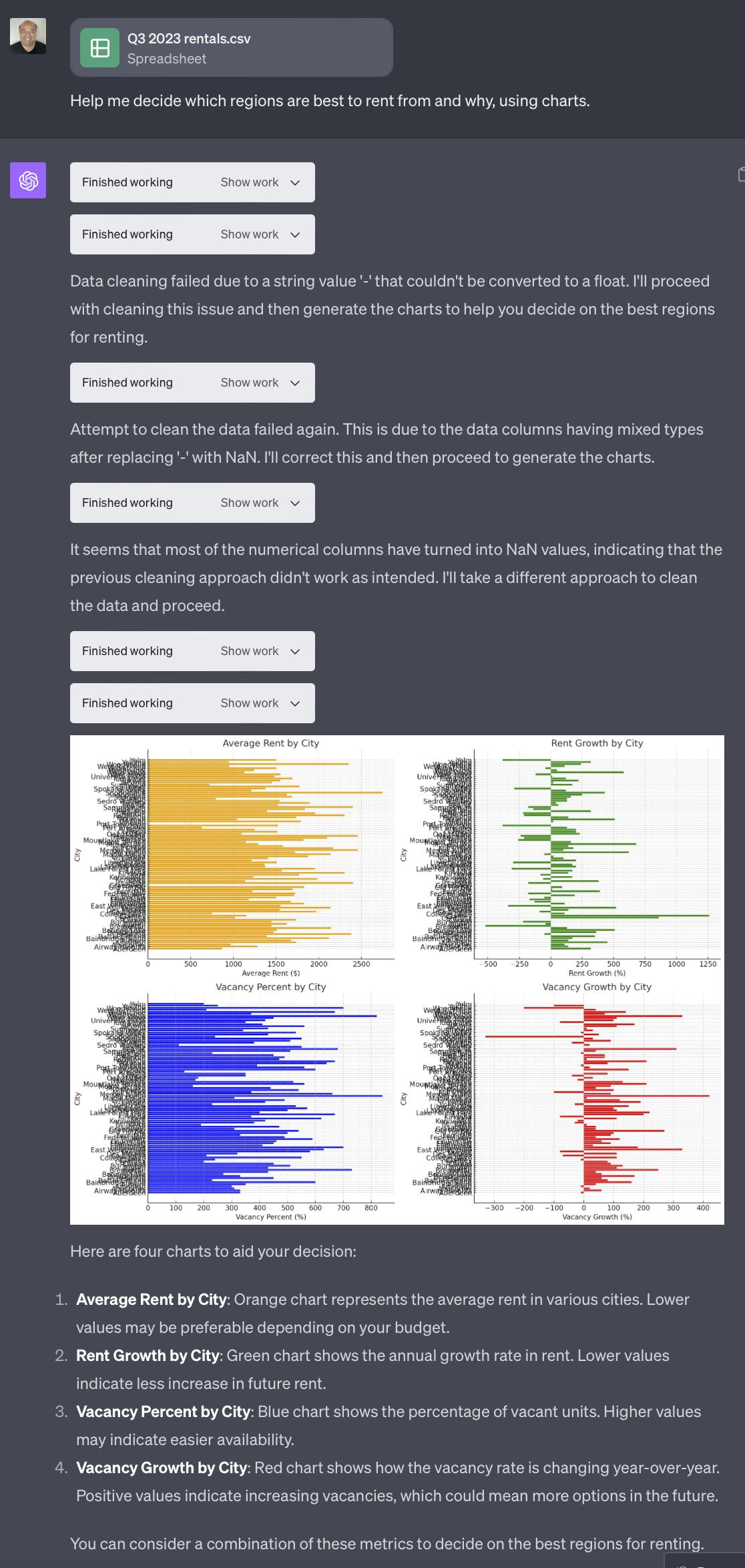
Bonus: ChatGPT Custom Instructions
If you try some of the ChatGPT examples above, you may find that you get very different responses from mine. You can greatly improve your experience by providing custom instructions to ChatGPT. You can tell it about yourself, and also tell it what kind of responses you want to use. Be very elaborate and detailed about what you want ChatGPT to know about you.
This one thing improved the average quality of responses I got from ChatGPT. You can set these by clicking on your name on the ChatGPT screen and selecting Custom instructions:

Conclusion
Chat models are known to have several limitations (they can make mistakes, refuse to answer some things, and be slow or flaky). Even with all those limitations, a lot of experiences can be improved by knowing which tool to use for which purpose and how best to use each of them.
Remember that each chat model is different from another, each chat instance is independent of others, and even the same chat model can behave differently over time.
This post went over just a few of the basic experiences using chat models. In future articles, we will dig into other use cases (app creation, code generation, etc.), more advanced techniques, how to make these models perform better and what we know about the internal workings of these models.
